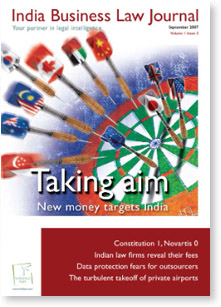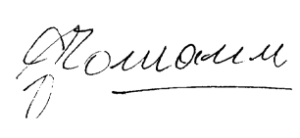Dear Friends,
Corporate and legal professionals are digesting news of the controversial high court judgment against Novartis. The ruling upholds the validity of the Indian Patent Act and prevents the patenting of “incremental innovations”. While some observers have hailed the ruling as a move that will protect India’s generic drugs industry and safeguard the availability of affordable medicines, others have lambasted it as a retrograde step that will stifle new research and deter foreign investment.

Editor
aromann@indilaw.com
India Business Law Journal
In the spirit of this magazine’s commitment to providing unbiased coverage and fostering constructive debate, we hear the views of lawyers on both sides of the argument. Writing for India Business Law Journal, Krishna Sarma, a lawyer who represents several pharmaceutical companies, gives her reaction to the ruling in this month’s Vantage Point (see page 21). Our Spotlight story, Patently constitutional, (page 22) hears the reactions of a wide range of stakeholders – including Anand Grover, a lawyer who opposed Novartis in the case – and considers some of the wider implications for business and pharmaceutical research.
Meanwhile, this month’s Intelligence Report delves into the murky world of law firm billing and sheds some light on the hourly rates charged by different firms.
The idea of having an open fee structure is a novel concept among law firms in India. Just two firms are known to make their billing rates publicly available and many are reluctant to reveal their rates even when asked to by a client.

India Business Law Journal
But times are changing. Customers want to know how much something costs before they buy it and law firm clients are no exception: They need to establish clear budgets before hiring lawyers. Furthermore, bringing transparency to law firm billing is a necessary step towards an environment in which clients can benchmark the value for money they receive – and demand – from their legal advisers.
With this in mind, and in response to requests from many of our corporate readers, India Business Law Journal invited more than 100 law firms to publish their fee structures openly in the magazine. Almost a quarter agreed, a heartening response given the sensitivity of the subject and the unprecedented nature of our request.
The hourly rates charged by these firms, accompanied by an enlightening and sometimes controversial analysis of the value for money that clients receive, can be found in this month’s Intelligence Report on page 35.
The information will certainly be welcomed by Indian and international corporations seeking to compare and benchmark legal fees. However, of even greater significance than the billing rates themselves is the fact that so many law firms agreed to take part.
The law firms that participated all did so in the spirit of setting higher standards for their industry. Their participation may be indicative of a fundamental change that is taking place as the legal profession modernizes and reforms: Closed-door family-dominated firms are gradually giving way to international style partnerships and the more progressive law firms are increasingly striving for best-practice standards of transparency and accountability.
The 25 firms that revealed their rates for this significant yet sensitive survey are to be applauded for taking a bold step that will benefit not only their clients, but the legal profession at large. In doing so, they are sending a strong signal of their commitment to a best-practice service culture in the Indian legal community.
Many other firms – including several with enviable reputations – chose not to participate. It would be unfair to criticize them for this. Some cited legitimate concerns such as client confidentiality to justify their decisions.
As always, we welcome your feedback on any part of the magazine and we encourage you to write to us if you have comments on any of the stories in this issue.
Comments should be sent to editorial@indilaw.com and may be published next month in our regular letters section, Inbox.
Enjoy this issue of India Business Law Journal.
The question on the table is not if, but how to open the doors.
–
–
–
Alfred Romann
Editor
aromann@indilaw.com



























